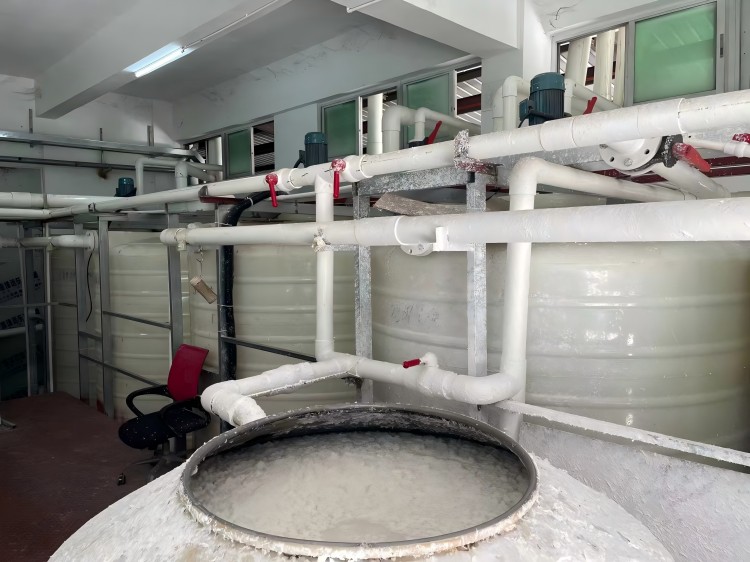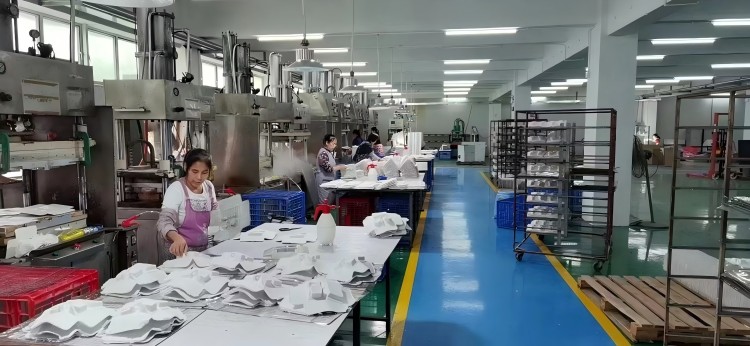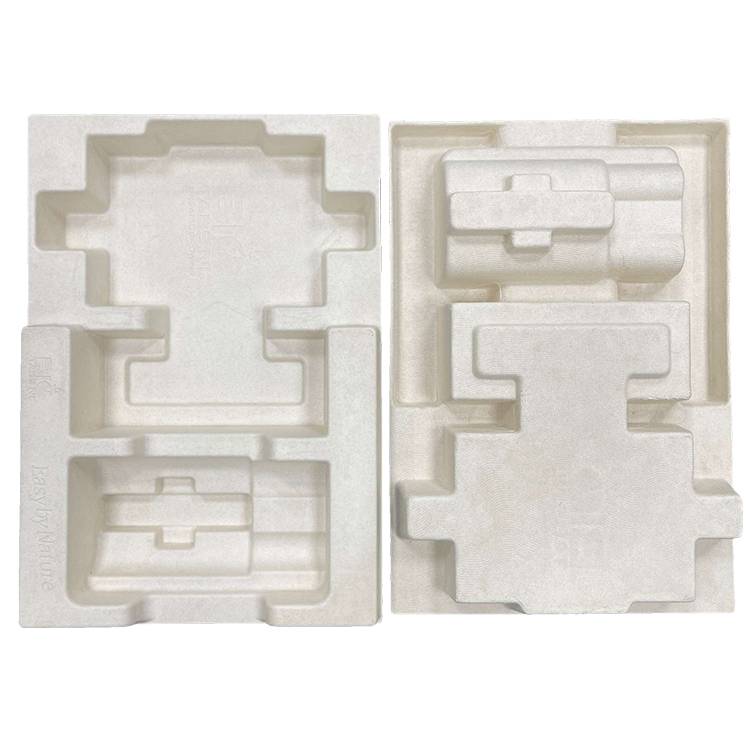The wet pressing process in pulp molding is a cutting-edge technique that combines traditional pulping methods with an automated production line to create high-quality, eco-friendly packaging products. While the initial pulping steps are similar to conventional methods, the wet pressing process completes forming, extrusion dehydration, drying, shaping, and trimming in a single automated machine. Let's dive into the key steps of the wet pressing production process used by pulp packaging manufacturers to produce custom molded pulp products.
1. Pulping
The pulping stage in the wet pressing process involves breaking down raw materials like wood pulp, sugarcane pulp, reed pulp, and bamboo pulp into fiber. These materials are commonly used by molded fiber packaging manufacturers to create food-grade tableware and fine industrial packaging. The pulping process begins by feeding raw pulp boards into a hydraulic pulper, which breaks them into fibers. The pulp is then screened and purified, improving fiber bonding and enhancing product quality.During this stage, manufacturers add essential fillers, pigments, and additives for waterproofing and oil-proofing, ensuring that the pulp meets the product's specific requirements. Controlling the pulp concentration and maintaining the liquid level in the storage tank are key to ensuring a smooth production process. This meticulous approach guarantees uniformity in the finished product, which is crucial for creating high-precision custom molded pulp items.

2. Molding
The molding process is where the pulp begins to take shape. In the wet pressing production process, there are two main molding techniques: vacuum molding and extrusion molding, with vacuum molding being the most common.In vacuum molding, the inner cavity of the lower mold is submerged in pulp and kept under negative pressure, allowing fibers to be adsorbed onto the mold’s surface while excess water is extracted. In extrusion molding, the pulp is pressed onto the mold surface using either a punch or compressed air. Both methods result in a wet pulp mold, which forms the foundation for the final product.This step is critical for custom molded pulp manufacturers, as it determines the basic shape and structure of the packaging. For industries such as food and electronics, precision is key, and molded fiber packaging manufacturers must ensure the molded products meet strict standards for accuracy.

3. Drying
Once the wet pulp molds are formed, they undergo the drying phase. The wet pressing production process employs in-mold drying, where the semi-wet molds are directly heated and dried within the mold. This technique enhances the density, stiffness, and strength of the final product, resulting in packaging that is durable and eco-friendly.Manufacturers carefully adjust factors such as mold pressure, heating time, and temperature to achieve optimal drying conditions, ensuring the quality of the final product. The direct drying method is often preferred by custom molded pulp manufacturers as it minimizes deformation and surface wrinkles, creating a smoother and more refined finish compared to traditional drying tunnels.
4. Shaping
Shaping is essential to ensure the final product maintains its intended form. In traditional pulp molding processes, products tend to deform or wrinkle after drying. However, the wet pressing process integrates shaping and drying into one step.After the wet pulp mold is created, it is immediately placed into a hot press for both drying and shaping. This high-temperature, high-pressure step not only dries the product but also gives it a smooth surface and precise shape. The entire hot pressing process takes about one minute, though the exact time depends on the product's thickness.For wet pressing molded pulp packaging used in industries like food service or electronics, this stage is crucial for creating products that are not only functional but also visually appealing.

5. Trimming
The final step in the production of custom molded pulp packaging is trimming. After shaping, the edges of the product may be uneven, or some parts may need to be removed to meet specific structural requirements. The trimming process ensures the final product has clean edges and meets quality standards.Some automated wet pressing production lines feature built-in trimming machines, allowing for precise trimming right after shaping. This streamlines the process and ensures that the finished product is ready for immediate use, whether it’s a food container or industrial packaging.
Summary:
The wet pressing process of pulp molding offers a highly efficient and precise method for creating eco-friendly packaging solutions. From pulp packaging manufacturers producing food-grade tableware to molded fiber packaging manufacturers crafting fine industrial packaging, this process ensures high-quality products with excellent strength, stiffness, and environmental benefits. Whether using custom molded pulp or wet pressing molded pulp, this advanced production technique is shaping the future of sustainable packaging.

